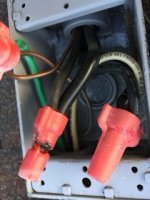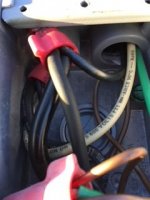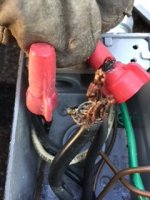UL 498 tests standard receptacles at 150% of rated current,1500 Volts, 1000A fault current, and for Mold stress relief: Unwired receptacles are subjected to 70°C for 7 hours, hospital grade @ 90°C..
Qualified persons expect UL listed feed-thru device lugs to handle idiot proof abuse, but after scolding clients for having 20A or 30A breakers on 15A wire, we don't expect DIY's to do that again.
WIRE CONNECTORS AND SOLDERING LUGS (ZMVV), which include typical insulated wire nuts for pigtails, don't require a UL standard for testing. Rather they are subject to NFPA-70 110.3(B), packaging instructions, labeled for voltage as low as 300 V, and temperatures as low as 75°C.
My service calls are finding more melt downs, burnt, or damaged devices not UL listed, or labeled for Instructions, responsible for tripping A/GFCI's. Its those purple Wirenuts, extension cords, USB outlets, power strips, surge protectors, and charging accessories purchased online, or from thrift stores.




